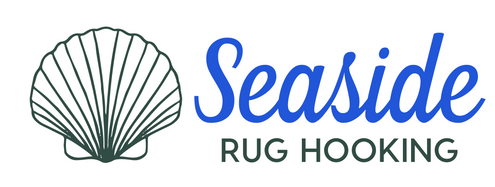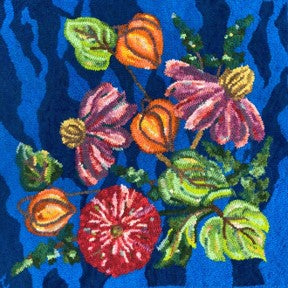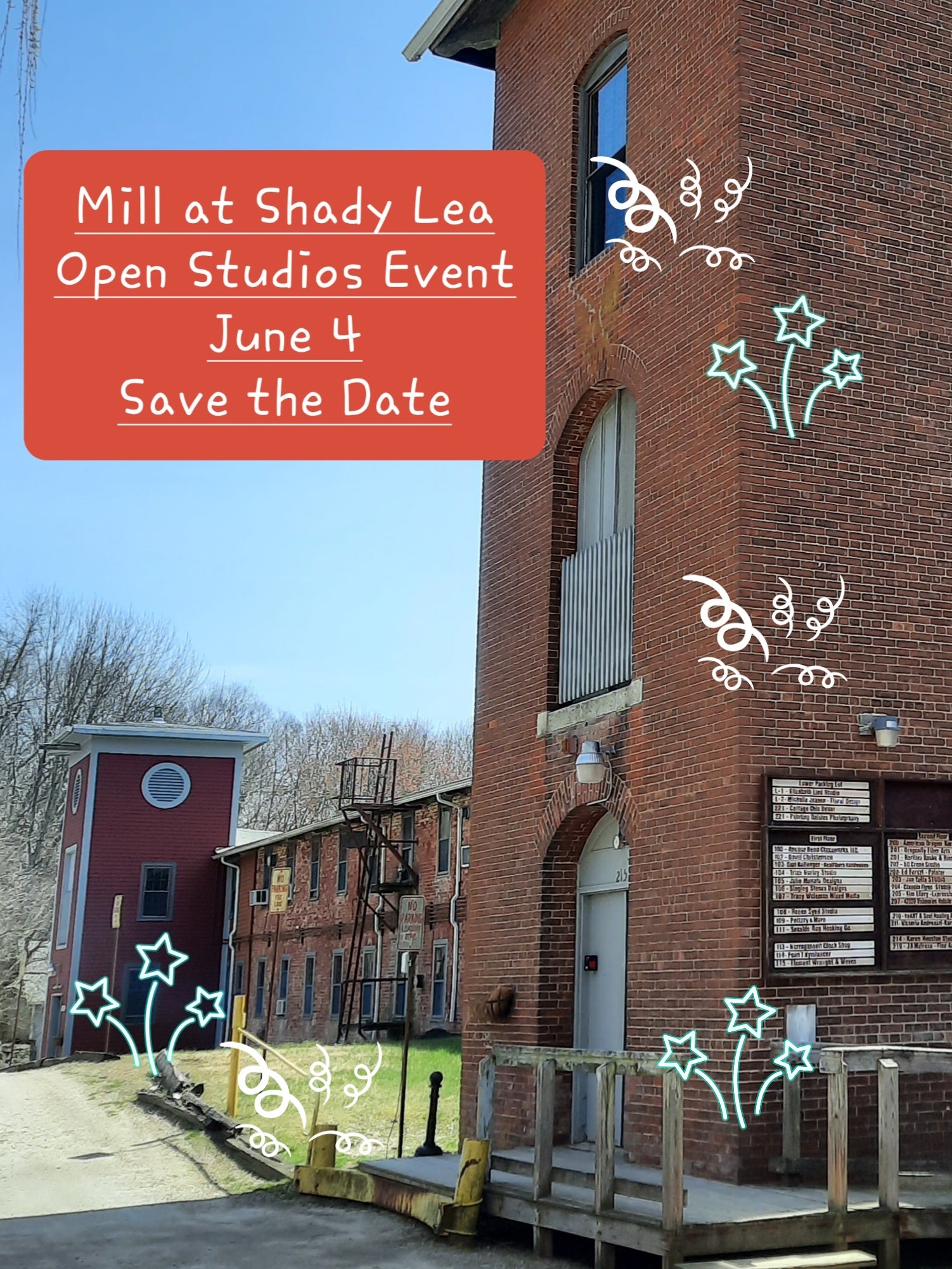I thought it would be fun to explore some post-impressionism art, especially the use of color and the use of the brush strokes to capture the feeling of the artists of that period in wool.
The art Post-Impressionism era was in the late 1800 to early 1900’s. Some of the most notable artists would include Cezanne, Van Gogh, and Seurat. These artists rejected the realistic use of color and small brush strokes of the impressionistic painters of Monet and Renoir.
Post-Impressionists continued to use vivid colors and used a thick application of paint. These artists distorted both the images and included an arbitrary use of color. The sunflowers below were painted by Van Gogh. Notice the wide brush strokes.

This is my interpretation drawn by Janet Conner
How do we translate this artistic style to rug hooking? The areas to discuss are width of strip, use of color, and use of light.
First the easiest way to translate the wide brush strokes would be with the use of a wide cut of wool. A wider cut is preferred for the translation of brush strokes but a smaller cut with be fine to translate the color use of post-impressionism.
THE USE OF COLOR
This is the most challenging part of a piece. You can basically use ALL COLORS or few colors in the overall completed rug. While you do not need to decide on everything pick one or two main colors. I took each motif separately and hooked as if it were the only image on the canvas. Flowers can be hooked in one base color natural colors but there is a variation and “poison” used in each image. Use a lot of color. Take your color wheel and go to an extreme analogous range of that base color.
As an example I have chosen the image of my rug Autumn Bloom rug, designed by Jane McGown Flynn, a Honey Bee Hive pattern. Note that each flower is different but linked. This is by design in the use of varied colors and “poison”.

The colors used for the Echinacea went from red to just shy of green, basically halfway around a color wheel. Here is the helpful hint: use the concept; light, bright, dark and dull. Also use spots and solids. You will use many colors and it is a great use of all the small pieces we have in our stash. This gives a large image life.
The Chinese Lanterns use orange, yellows, and purple(veins). The large leaves belong to the Chinese Lanterns and are a yellow green with a few other colors added for effect. The other leaves are intentionally hooked darker to recede into the background.
The bottom flower was completed last as a Mum type of flower. As I had worked the purple side of the color wheel for the Echinacea I went with analogous purple to orange(peach) for the Mum. Notice that this flower is not really defined but the color catches the eye not the light placement or detail.
The next step to consider is the light placement. Use all your training from fine shading and incorporate it in these motifs. The difference here is that you are not concerned with the color but the value. If you want the light to show use a light value on the top pedal under it dark value. The color does not matter. This is where you can have fun or go crazy. Let your creative side flow. Every once in awhile put a strange color in just for the fun of it.
As one last note on color. Incorporate the colors in more than one motif so your eye will flow from one motif to another. I used the dark red and orange in all the flowers. You will also see the leaves have the same brown veins.
The hardest part was to choose a background. I went from a peach with a little wash of dark peach to this combination of blue. I found a Van Gogh painting that had a medium dark background against a medium dark painting. It was perfect. The image I wanted to convey was dappled shadows. It took a true solid background to make the motifs stand out. It also took larger “brush strokes” to calm down the movement.
My final piece ended up all color. You could absolutely make it anything you want. Just be creative...
And have fun!
Laura



Comment
Great information. I am still trying to learn how to use the color wheel. This is a very good tool that can create something colorful and pleasing to the eye. Thanks for the mini lesson. Would be a good workshop class at camp one day. Stay…❤️